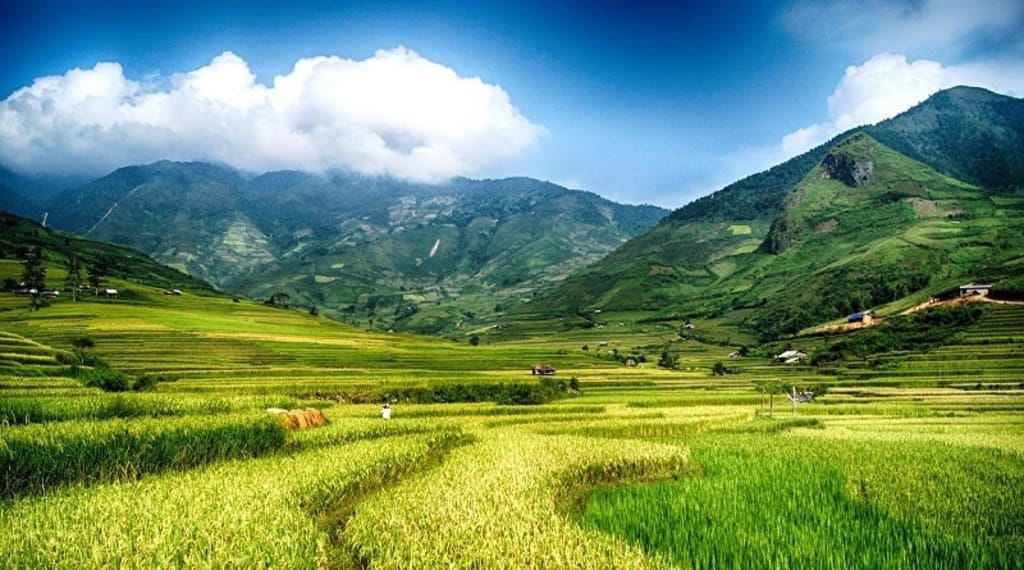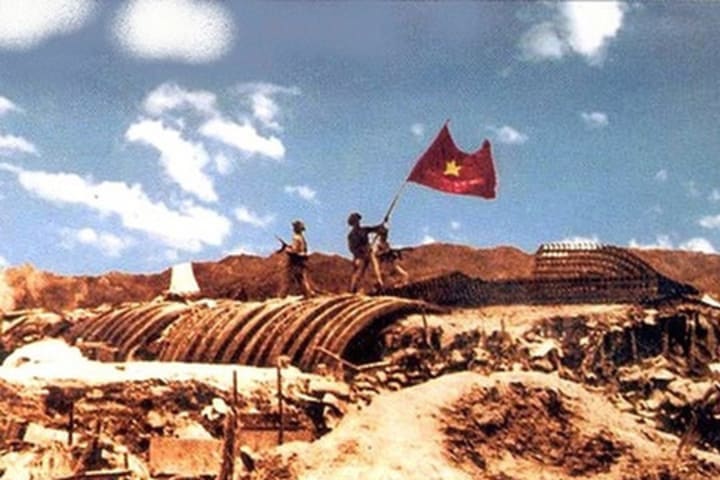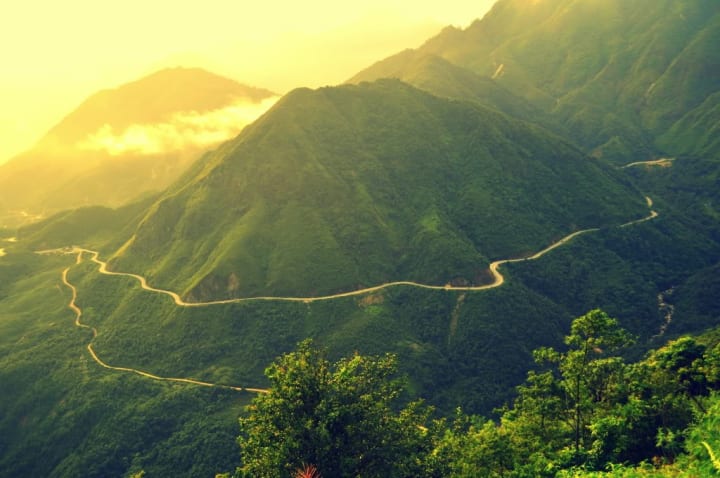
In his memorirs, General Vo Nguyen Giap poured his heart and emotions into recounting the Dien Bien Phu Campaign. Despite having commanded major operations like the Border Campaign, the Hoa Binh Campaign, and the Northwest Campaign, the Dien Bien Phu Campaign remained the most challenging and crucial decision in the legendary Commander’s life.
Seventy years after that victorious day, his memories of Dien Bien resonate with the heroic echoes of history. From high lookouts that witnessed every step of the people’s resolute progress, to villages full of spring flowers in this heroic land, traces of the warm-hearted, resilient, and courageous people of Dien Bien are evident everywhere. Muong Phang, the site of the Dien Bien Phu Campaign command post, approximately 40km from the city center, has transformed from a dense forest that sheltered soldiers during wartime to a hostoric monument that preserves the enduring greenery of those years.
Revisiting the simple and untouched workplace of Genental Vo Nguyen Giap. Deputy Chief of General Staff and Special Chief of Staff of the Dien Bien Phu Campaign Hoang Van Thai, Military Adviser Vi Quoc Thanh, and Information Chief Hoang Dao Thuy, one can hear the historic tale of the 105 days (January 31, 1954 – May 15, 1954) they spent at the Command Post, using their great intellect to pursure the values of independence and peace.
Beneath the ancient forest canopy, time seems to stand still, and the space exudes a tranquil atmosphere. The pride of our forefathers, whose victory once “shone across five continents and shook the world”, is not confined to the pages of books and history, it resonates as a constant companion before the eyes of every witness.

One cannot forget the landmark of Hill A1 – a strategically crucial position in the campaign. Today, Hill A1 lies peacefully under the sun, but who can forget the turmoil it faced during the days of smoke and fire? The marks of craters created by nearly one ton of explosives, preserved intact, stand as a testament to the extraordinary courage of the Vietnamese people during the 39 days and nights of combat. The generations that followed will never forget the epic tale of that contury. No far from the historic site of Hill A1 is the A1 Martyrs Cemetery, built in 1958. This is the resting place of the brave soldiers and personnel who sacrificed their lives during the Dien Bien Phu Campaign. Thirty years ago, the cemetery was transformed into the role of a cultural-historic landmark. Its mortuary building was designed to resemble the traditional still houses of the Thai people, along with a memorial in the style of the Pavilion of Edicts, with walls, moats, and reliefs depicting the story of “Nine years to create the history of Dien Bien – of red laurel wreaths and golden history”.
The journey to Dien Bien is never too far, and in March, it fells even colser. This is the time when mountain ebony of Bauhinia flowers cover the slopes in white. Pha Din Pass, where artillery and ammunition wrer transported for the campaign, paving the way for the late “Muong Thanh, Hong Cum, Him Lam – The plum bossoms turn white again, the orange orchards ripen again”. The 32km-long pass is considered the boundary between the provinces of Son La and Dien Bien, known in the Thai language as “Pha Din”, with “Pha” meaning sky and “Din”meaning land. The pass truly resembles the meeting point between heaven and earth due to tis winding and tracherous terrain, with steep montains on one side and deep valleys on the other.

From those heights, looking down into the Dien Bien Valley, it would be incomplete not to honor the largest rice-growing valley in Northwest Vietnam – Muong Thanh -with an area of over 140km2. Folk wisdom claims, “First Thanh, second Lo, third Than, dourth Tac”, suggesting that among the vast rice fields, Muong Thanh stands first, followed bt Muong Lo (Yen Bai), Muong Than (Lai Chau), and Muong Tac (Son La). Spreading out like the petals of a Bauhinia flower embracing legendary landmarks, it is nourished by the meandering Nam Ron River, not only rich in beauty but also a beloved source of life, sustaining the people of Northwest Vietnam and proving precious rice ofr the enteire homeland.
The journey to revisit Dien Bien never truly concludes but unfolds anew every day. With 19 ethnic communities living together, dominated by the Thai and Mong, the local culture is diverse and vibrant, boasting many intangible cultural heritages of national and international value, such as Xoe Thai dances, the fastival at Hoang Cong Chat Temple (held in Ban Phu town), clothing of the Mong people… Memories of Dien Bien not only vividly recall the heroic past but also evoke a sentimental connction to the lush hills of Northwest Vietnam, adorned with Bauhinia flowers./.
About the Creator
Huybeat
A person who loves movement and exploration






Comments
There are no comments for this story
Be the first to respond and start the conversation.